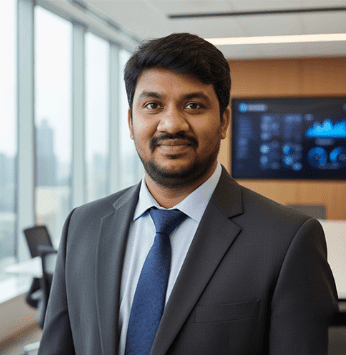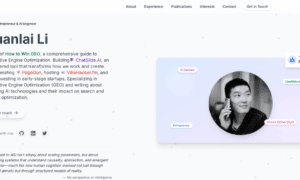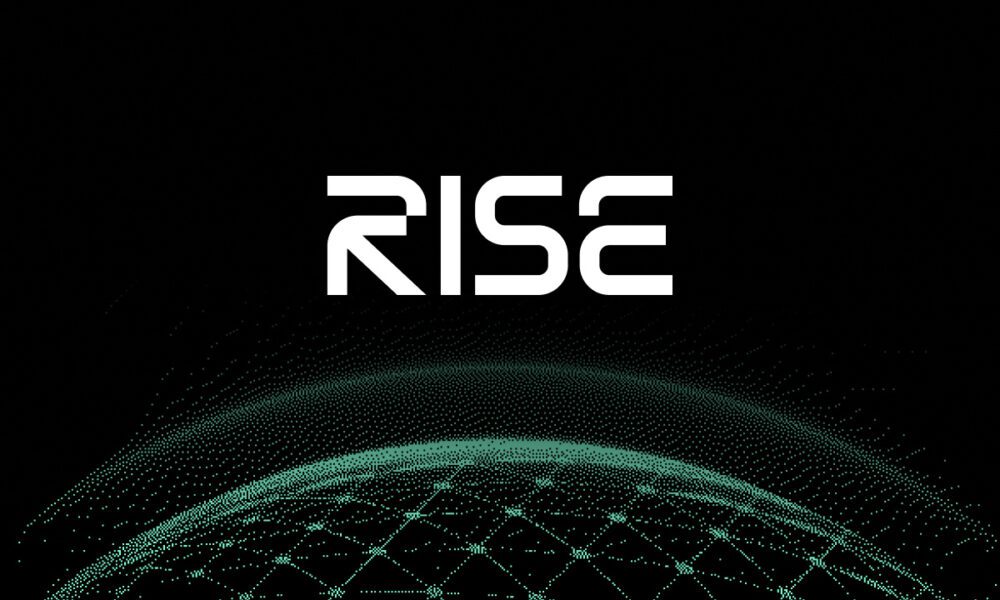In a world where digital systems do not simply support business but are the business, the hidden engineers who keep enterprise platforms reliable, scalable, and secure hold more power than ever. One of these quiet architects is Shravan Kumar Reddy Padur, an engineer whose work inside complex Oracle, virtualized, and hybrid environments reshaped expectations for global infrastructure reliability and digital continuity through the late 2010s.
From the earliest days of cloud transformation to the rise of predictive automation, Shravan has been at the core of some of the most demanding enterprise evolution programs. His work is not framed in buzzwords or boardroom hype. It lives in the reality of zero-downtime upgrade cycles, automated failover frameworks, intelligent cluster architectures, and hybrid-cloud migrations where service disruption is not a choice.
The measure of enterprise IT is simple. You either protect business continuity or you do not. Everything else is commentary, Shravan once remarked in a leadership roundtable.
Across industries and continents, organizations were learning a hard truth: downtime was no longer an inconvenience. It was a liability. Shravan’s body of work between 2016 and 2018 provided a blueprint for a new era. The systems he shaped did not only stay online. They adapted, recovered, and evolved.
2016: Building the Backbone of Continuous Enterprise Operations
By late 2016, digital infrastructure was in a moment of reckoning. Cloud adoption was accelerating, but mission-critical workloads still lived in sophisticated on-prem environments with years of custom logic and intricate network zones. Shravan was already leading modernization programs that would turn these legacy estates into resilient, future-ready platforms.
At a time when many global companies braced for weekend outages during upgrades, his Oracle E-Business Suite R12.2 modernization efforts set a new standard. He implemented edition-based redefinition, introduced disciplined adop cycles, and rehearsed upgrade sequences until they ran with the predictability of a switch flick. Systems once associated with overnight maintenance windows now achieved near-zero visible disruption.
A senior technology leader who worked with Shravan recalled:
There were environments where we simply assumed outages were unavoidable. Shravan turned that belief upside down and made zero downtime a reasonable expectation.
At the same time, network stability became a battlefield as enterprises scaled virtualization. Shravan modernized firewall rule structures, re-engineered legacy subnets into structured, hierarchical models, and helped enterprises adopt cross-platform virtualization with VMware. His role was not just technical. It was strategic. Shravan recognized that in a cloud-connected world, security and uptime were inseparable disciplines.
2017: Inventing the Discipline of Autonomous High Availability
If 2016 was about establishing reliability, 2017 was about intelligence.
Shravan’s frameworks combined Oracle RAC clustering, Oracle Data Guard, and policy-based failover orchestration to move beyond high availability into a form of autonomous resilience. Telemetry monitored cluster behavior. Node health checks triggered automatic recovery. Failover actions executed with machine precision, not manual intervention.
A system that waits for a human to save it has already failed, he noted during an internal engineering forum.
Engineers who saw this shift firsthand often describe the moment they realized that database clusters under Shravan’s architecture did not fail in the conventional sense. They healed.
He operationalized best practices that major vendors would later commercialize as autonomous database features and integrated monitoring intelligence long before it became fashionable. His approach was rigorous: test failover paths, simulate node crashes, audit disaster recovery scripts, and automate rollback protocols so cleanly that no outage could ever claim innocence.
Multiple leaders credit him with establishing a culture where resilience became proactive, not reactive.
If resilience is only validated after failure, you are gambling. Shravan made us test success long before anything went wrong.
2018: Predictive, AI-Awareness, and Economic Intelligence in Infrastructure
By 2018, the industry buzzwords were changing. Enterprises were no longer satisfied with uptime alone. They wanted scalability, predictability, cost-efficiency, and intelligent orchestration. Shravan was again one step ahead.
Drawing from principles later echoed by the likes of Netflix Scryer and Google’s predictive engines, Shravan applied machine-learning driven forecasting to infrastructure scaling.
His approach fused:
- Telemetry-driven autoscaling
- Predictive resource modeling
- Closed-loop economic governance
- Hybrid cloud placement strategies
His research and field work anticipated a world where compute allocation, database growth, and resource tuning could be algorithmic rather than manual.
In practical enterprise terms, it meant that servers scaled before users felt the need, budgets stayed aligned with real-world consumption, and critical systems adapted in real time to both performance and cost signals.
Stakeholders recall these transitions as forward-looking and deeply impactful.
He showed us that infrastructure could be both intelligent and disciplined. Not clever hacks, not automation for its own sake, but execution shaped by math and foresight.
At a time when most organizations were still learning to spell AI in infrastructure, Shravan operationalized it.
A Consistent Theme: Discipline, Precision, and Measurable Impact
Throughout these years, a consistent pattern defined Shravan’s success:
- No promise without architecture behind it
- No change without rollback validation
- No automation without auditability
- No upgrade without rehearsal cycles
- No innovation without measurable business outcomes
Those who worked with him describe a quiet but unshakeable belief in engineering integrity.
You do not future-proof by gambling on shiny tools. You future-proof by building systems so disciplined that they welcome change, he once shared.
This mindset shaped everything from on-prem hybrid stacks and Oracle RAC clusters to APEX-based self-service environments and Power BI reporting platforms that expanded access to analytics without jeopardizing governance.
Shravan’s work consistently placed power into the hands of users and reliability into the foundation of systems.
A Quiet Leader in a Loud Digital Era
Shravan does not chase titles, and he does not chase headlines. That makes his story unusual in an age of loud innovation. His influence flows through architecture choices, deployment practices, governance frameworks, and engineering cultures he helped shape.
Peers often describe his leadership not through grand gestures but through high-caliber discipline and relentless clarity.
One colleague summarized it simply:
We used to plan for downtime. After Shravan, we planned for continuity. That is how you measure impact.
Looking Forward in 2018: The Foundations are Set
By the close of 2018, the seeds of autonomous enterprise computing were fully planted. The questions were shifting:
- From manual recovery to self-healing resilience
- From resource provisioning to predictive orchestration
- From static infrastructure to intelligent hybrid models
- From business trying to adapt to systems to systems adapting to business
Shravan’s work did not chase the trend. It shaped the direction of the trend.
And he remains grounded in what matters most.
Successful infrastructure disappears into the background. It is not glamorous. It simply works, protects, and scales with dignity.
Conclusion: Architecture as a Legacy
As 2018 closed, many enterprises found themselves standing on stronger ground because of the architectural rigor, modernization frameworks, and self-healing foundations guided by engineers like Shravan.
He did not merely help systems evolve. He helped organizations mature. He helped technology become dependable, intelligent, and quietly powerful.
In a digital economy where success is measured in milliseconds of uptime and confidence is built on invisible reliability, Shravan’s legacy through 2018 is both clear and rare:
He built systems that think, heal, and endure.
And he did so with precision, integrity, and the belief that true engineering excellence never needs to shout.





























